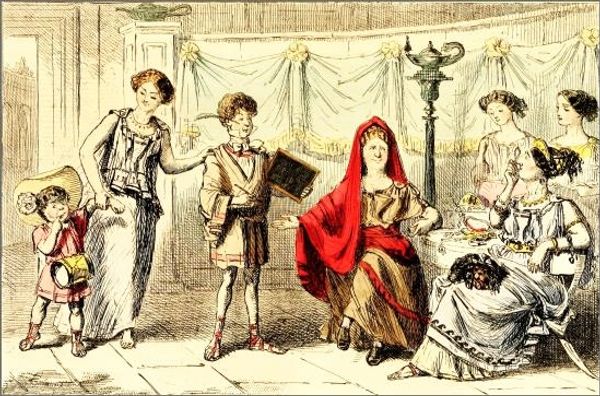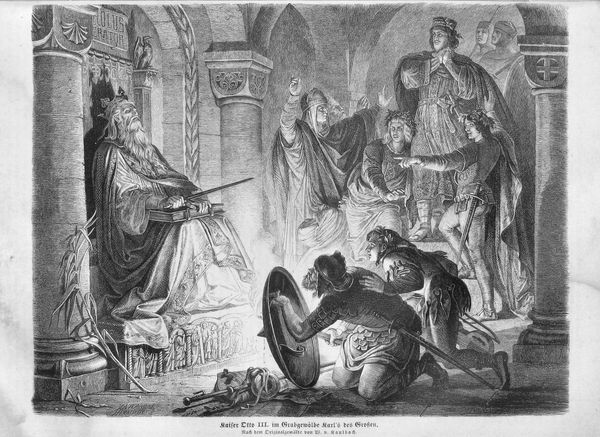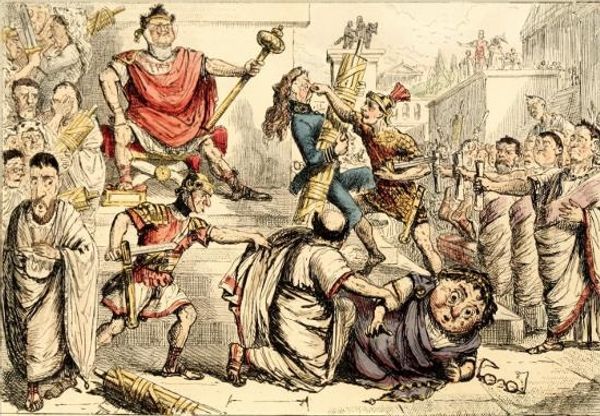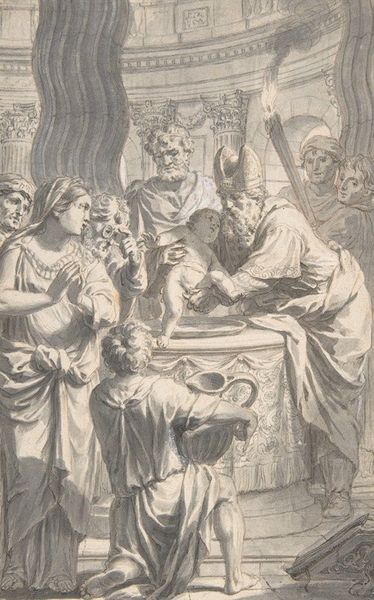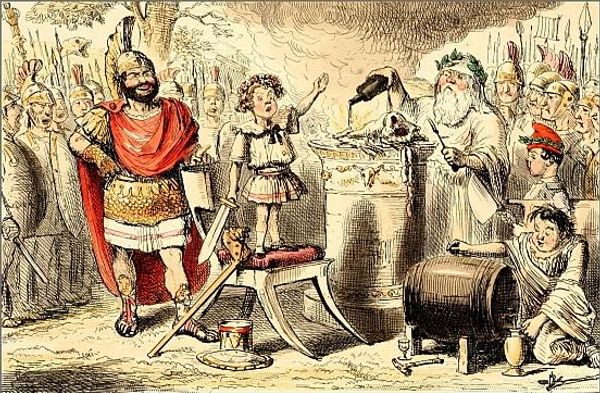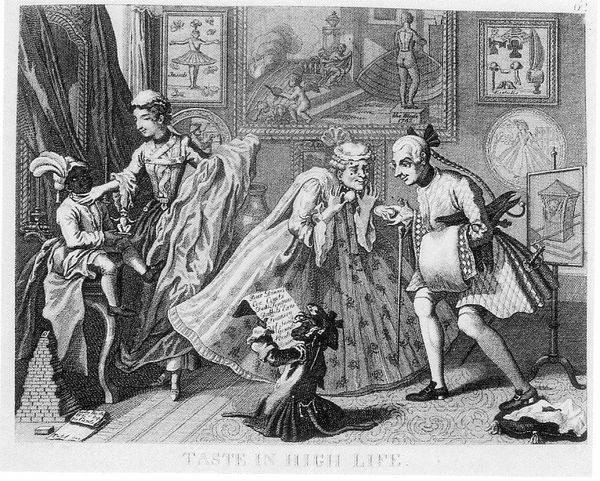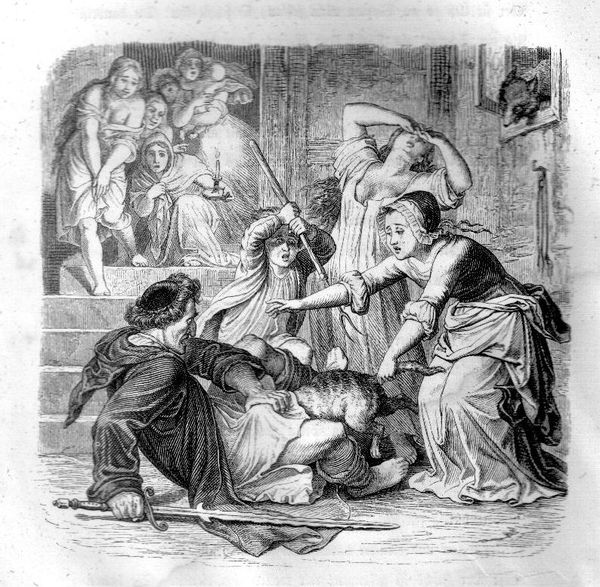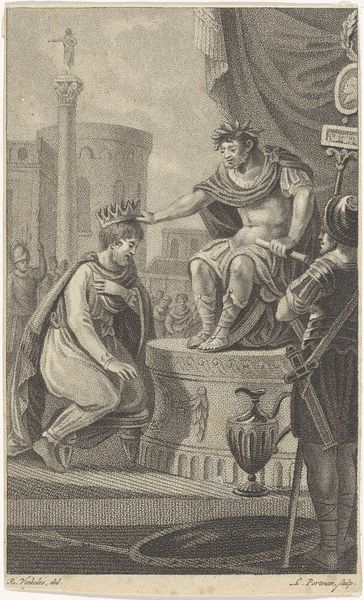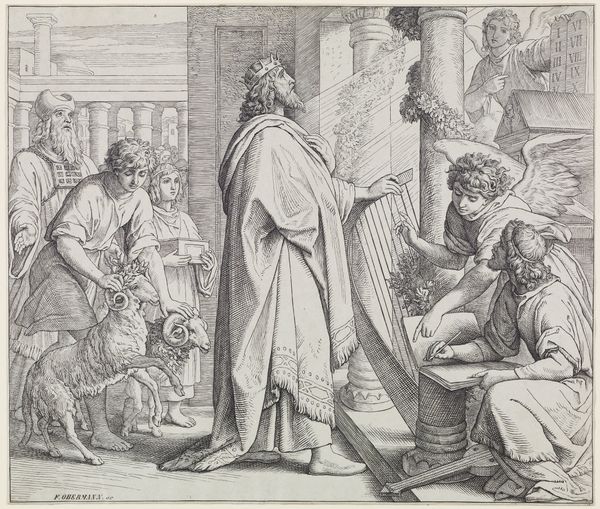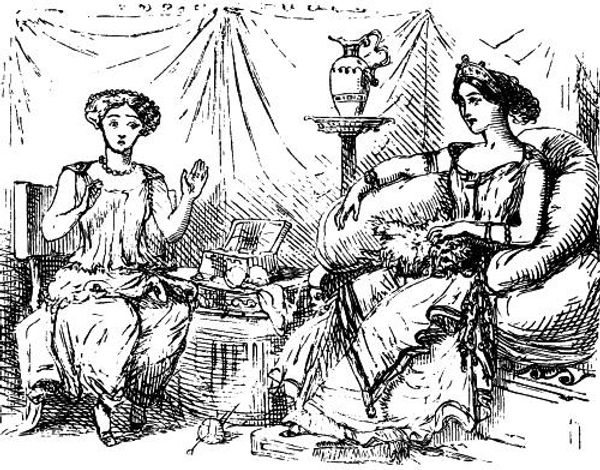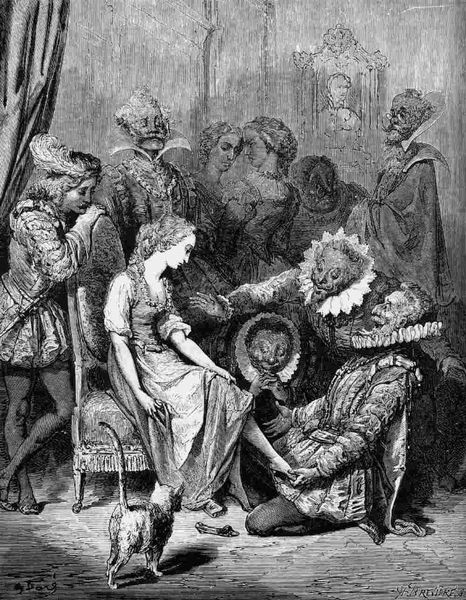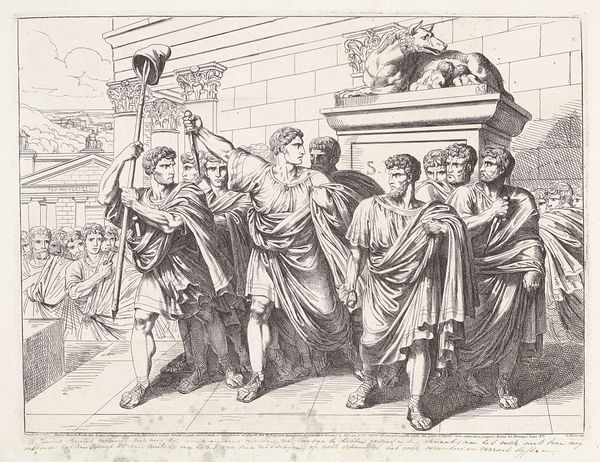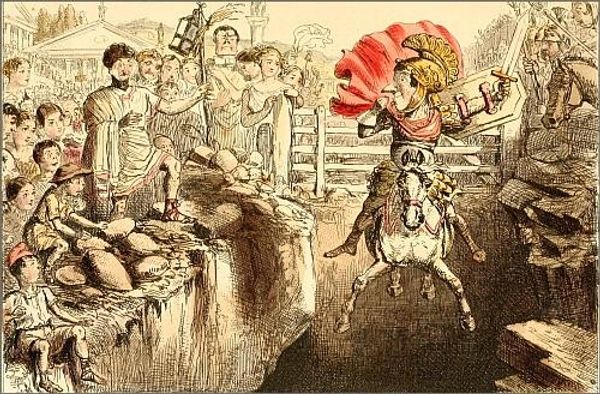
drawing, ink, pen
#
portrait
#
drawing
#
narrative-art
#
caricature
#
figuration
#
romanesque
#
ink
#
pen
#
history-painting
#
academic-art
#
mixed media
Copyright: Public domain
Curator: This spirited drawing, “Cicero denouncing Catiline,” is by John Leech. It's rendered with pen and ink, utilizing caricature to deliver its narrative. Editor: It’s incredibly animated. My immediate reaction is that this drawing seems to brim with exaggerated figures—all gesticulating, grimacing, and embodying the turmoil of the scene. Curator: Precisely! Leech employs dense cross-hatching to sculpt volume and texture across the composition, giving it an almost sculptural presence despite being a drawing. Notice the intense focus on line work; each stroke defines the contours and heightens the emotional charge. Editor: Absolutely, but consider the historical context. Cicero’s denunciations of Catiline weren't just about preserving political power; they touch on class struggle and corruption in the late Roman Republic. This image likely reflects contemporary anxieties about similar issues, repackaging history for political commentary. How else can you explain top hats and monocles? Curator: Undoubtedly, the anachronisms add a layer of satiric interpretation, and there’s a striking formal coherence to appreciate here, regardless. Consider the placement of Cicero himself; he is framed against vertical elements in the background, which emphasize the central and dynamic diagonal as his raised arm cleaves the scene. Editor: Yes, and to view the artwork from a social lens, you see echoes of power dynamics—who speaks, who is heard, and who is silenced. What narrative are we participating in, if we appreciate only form, void of these perspectives? Is there perhaps an ethical dilemma in such a decontextualization? Curator: I acknowledge your position. Still, one must acknowledge the masterful deployment of graphic techniques to establish an evocative and dramatic spectacle. The caricature amplifies emotions—indignation, skepticism, anger—revealing the performative nature of the political moment. Editor: Indeed. Leech's caricatures help to expose some uncomfortable truths through an accessible format that would have encouraged contemporary audiences to question their leaders and possibly their political system. We get to reassess visual rhetoric by confronting the power relationships apparent in "Cicero denouncing Catiline." Curator: An examination which prompts one to reconsider, with newly refined vision, the rich density with which meaning operates and radiates across this lively rendering by John Leech. Editor: Precisely—leading us to contemplate the many interwoven narratives and realities such historical images reflect.
Comments
No comments
Be the first to comment and join the conversation on the ultimate creative platform.
